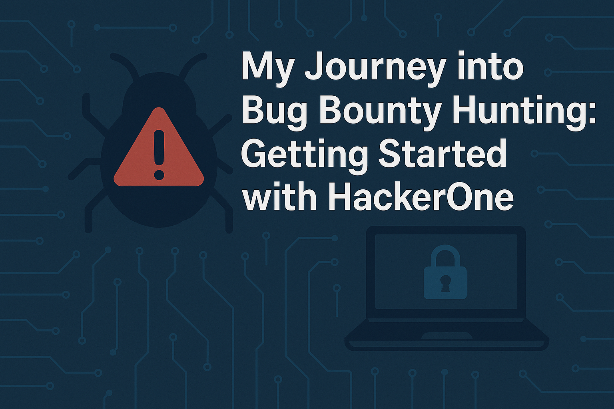My Journey into Bug Bounty Hunting: Getting Started with HackerOne
As an IT and cybersecurity professional with 25 years of experience, I have spent much of my career identifying and resolving security vulnerabilities in software and web applications. Over the years, I’ve encountered numerous issues, some glaring and others more subtle, but I never actively participated in bug bounty programs—until now.
Recently, I decided to formally try my hand at bug bounty hunting and signed up for HackerOne as my primary platform. Bug bounty programs offer a structured way for security researchers to report vulnerabilities and get rewarded for their findings, which aligns well with my expertise and curiosity.
Getting Started with Bug Bounties
Bug bounty hunting requires a keen eye, a deep understanding of security principles, and a methodical approach. Unlike traditional security assessments, where I’ve worked in controlled environments, bug bounty hunting presents a different challenge: dealing with real-world applications without prior knowledge of their code or architecture. This requires thorough reconnaissance, understanding of attack surfaces, and patience.
One of the biggest advantages of platforms like HackerOne is that they provide clear scopes, guidelines, and legal protections for ethical hackers. By joining the platform, I now have access to various programs that welcome security research and encourage responsible disclosure.
The Plethora of Tools Available
Bug bounty hunting benefits from a wide range of tools that help with reconnaissance, scanning, fuzzing, and exploitation. Some of the well-known tools I’ve incorporated into my workflow include:
- Burp Suite – A must-have tool for web security testing, allowing for interception and manipulation of web traffic.
- Nmap – Essential for network scanning and identifying open ports and services.
- ffuf & dirsearch – Great for directory brute-forcing and discovering hidden files.
- sqlmap – Automates the detection and exploitation of SQL injection vulnerabilities.
- Metasploit – A powerful framework for penetration testing and exploit development.
- Amass – For advanced reconnaissance and subdomain enumeration.
The right combination of tools depends on the target application and the scope of testing, but automating repetitive tasks is where things get interesting.
Automating Bug Bounty Hunting
Given my experience in software development and scripting, I recently created my own program to automate certain aspects of bug bounty hunting. The program integrates several reconnaissance techniques, including subdomain enumeration, open port scanning, and basic vulnerability detection. By automating these initial steps, I can quickly identify potential weak points and prioritize manual testing efforts.
Automation is a double-edged sword—while it speeds up processes, manual validation is still necessary to ensure that findings are legitimate. False positives can waste time, and some vulnerabilities require a human touch to exploit effectively. That said, automation helps streamline the workflow and allows me to focus on higher-value discoveries.
What’s Next?
As I continue my journey into bug bounty hunting, I plan to share my findings, insights, and possibly even some of my automation scripts. The field of cybersecurity is always evolving, and participating in bug bounty programs not only enhances my skills but also contributes to a safer digital landscape.
If you’re considering bug bounty hunting, I highly recommend starting with platforms like HackerOne or Bugcrowd. Learn the fundamentals, practice on Capture The Flag (CTF) challenges, and build a methodology that works for you. With persistence and the right mindset, finding and reporting security vulnerabilities can be a rewarding experience.
I’ll be sharing more updates as I progress in this space. If you have any tips, tools, or experiences to share, feel free to connect!
#BugBounty #HackerOne #CyberSecurity #EthicalHacking #InfoSec #BugBountyHunting #PenTesting #SecurityTools







